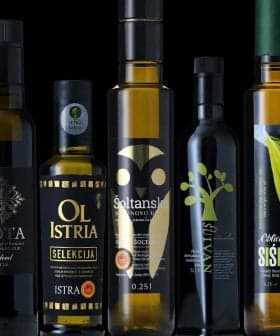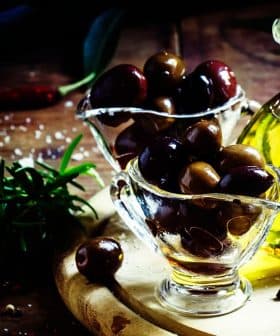 11.1K reads
11.1K readsHealth
Nutri-Score Remains the Front Runner for Europe's Food Label Program
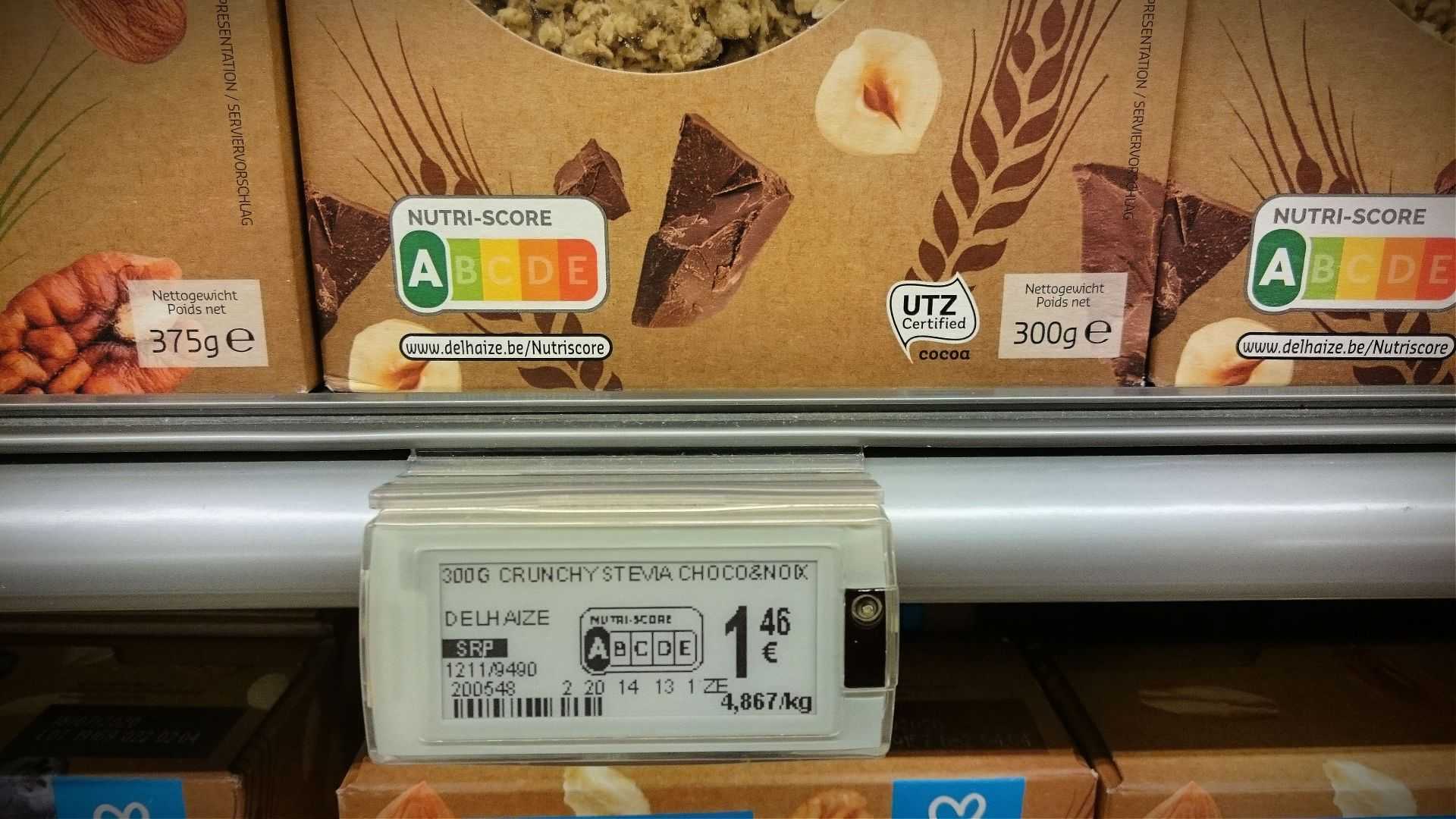
The Nutri-Score front-of-pack labeling system is gaining popularity across the European Union, with Germany, Belgium, the Netherlands, and Switzerland adopting it, while Luxembourg and Spain are preparing for their own roll-outs. Despite opposition from some E.U. countries, Nutri-Score is supported by the European Consumer Organization and is seen as a beneficial tool for helping consumers make healthier food choices based on nutritional information. The system, which assigns a color and letter to products, has been shown to improve shopping cart nutritional quality and is supported by scientific studies as an effective way to help consumers understand food quality and nutrition.
The popularity of Nutri-Score across the European Union continues to rise in the bloc’s bid to harmonize all front-of-pack labeling (FOPL) systems by 2022.
In Germany, the adoption of Nutri-Score continues to gain traction, with more major food companies opting to label their products with the French-born FOPL.
Olive oil is in no way penalized by Nutri-Score. Olive oil is rated C, which is the best score for added fats… This ranking is fully consistent with public health recommendations.
Belgium, the Netherlands and Switzerland are following suit, while Luxembourg and Spain are preparing for their own Nutri-Score national roll-outs as well.
Additionally, the European Consumer Organization, which includes 44 national consumer associations from 32 different countries, has already expressed its full support for Nutri-Score.
Despite the opposition of some E.U. countries, such as Italy and Czech Republic, Nutri-Score remains the front-runner among several other alternatives to be adopted as an E.U.-wide FOPL
All of this should not come as a surprise, according to Pilar Galan, a senior member of the nutritional epidemiology research team at the Sorbonne Paris Nord University.
“The implementation of Nutri-Score on food packs is a benefit for public health and for consumers,” she told Olive Oil Times. “It helps them to make healthier food choices at the point of purchase by delivering simple at-a-glance nutritional information, permitting them to compare nutritional quality easily across food products.”
Comparing products within the same category of food is the main point of contention for Nutri-Score since it is both a distinguishing feature of the FOPL and the most criticized for those who oppose the labels.
See Also:Nutri-Score NewsNutri-Score assigns a color (from green to red) and a letter (from A to E) to classify the product, which is evaluated for its contents per 100 grams or 100 milliliters. The Nutri-Score design also asks the consumer to evaluate products according to their specific category.
“Foods belonging to the same category or same food item proposed by different brands, or foods belonging to different categories only if they are truly relevant, [so that consumers] compare foods that are comparable in their conditions of usage or conditions of purchase,” Galan said.
Despite this, many in the olive oil sector believe that the “Yellow C” assigned by Nutri-Score to any olive oil does not correctly represent the proven health benefits of extra virgin olive oil, which, in their view, means that the label misleads the consumer.
They believe that extra virgin olive oil should be placed in the top healthy food category, the “Green A,” as recently stated, by Spanish extra virgin olive oil producers and others.
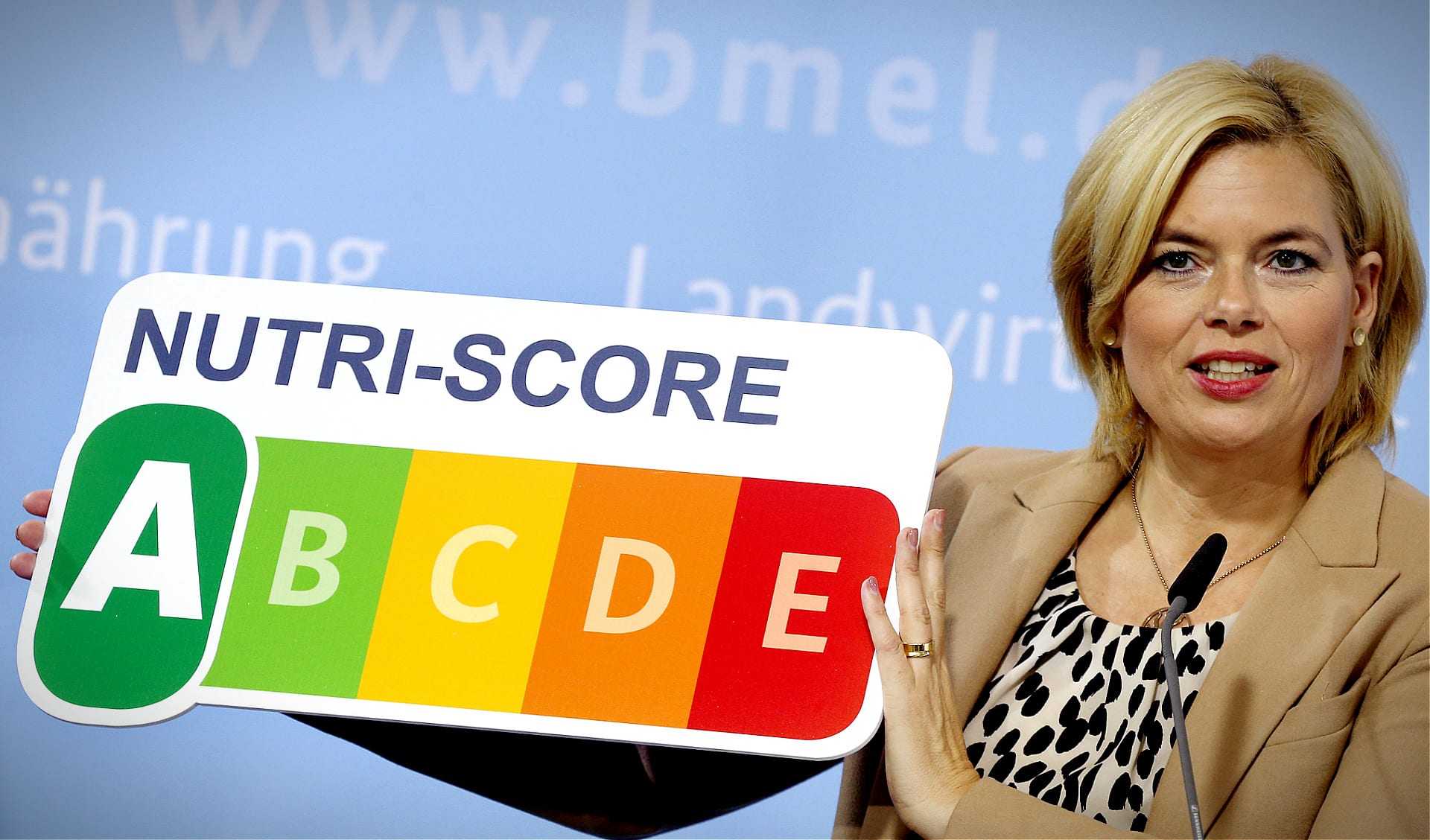
Julia Klöckner, Federal Minister of Nutrition (Germany)
However, Galan argues that Nutri-Score does not penalize olive oil and instead demonstrates to consumers that it – along with rapeseed oil and walnut oil – is preferable to most other vegetable oils and animal fats.
“Nutri-Score in no way penalizes olive oil,” Galan said. “Olive oil is rated C, which is the best score for added fats, seasoning or cooking, and even vegetable oils. This ranking is fully consistent with public health recommendations. In Spain, as elsewhere, [those recommendations] do not suggest the consumption of olive oil without limit.”
“If consumers want to choose a bottle of oil, thanks to the Nutri-Score label placed on the supermarket products, they will easily see that olive oil is the best ranking compared to other oils,” she added.
Galan, who is also the co-author of several studies on Nutri-Score that have been published by some of the most relevant scientific journals, said that the public health decisions that have thus far led to the implementation of Nutri-Score are mostly based on epidemiological data and not “on the specificities of the nutritional composition of foods and their potential effects on physiological functions.”
“This supports the recommendations for olive oil, both for public health recommendations and for consideration in the positive elements included in the calculation of the Nutri-Score,” she said.
“It is essentially the results of epidemiological studies, in particular the trials of interventions, which clearly demonstrate the impact on the health of olive oil and in particular to the prevention of cardiovascular diseases,” Galan added.
See Also:Labeling Systems Like Nutri-Score Could Save Lives, Researchers SayHowever, many in the olive oil sector believe that Nutri-Score does their product a disservice by comparing it to other vegetable oils – most of which cannot be extracted mechanically as virgin and extra virgin olive oils are and instead undergo a chemical process requiring powerful solvents to extract the oils.
Galan counters that the data from her epidemiological work and meta-analyses demonstrate that the other vegetable oils graded with a C by Nutri-Score (namely rapeseed oil) also have healthful properties. She added that while olive oil is typical of the Mediterranean countries, any E.U.-wide FOPL has to consider other food cultures within the bloc too.
On top of all of this, Galan emphasized that Nutri-Score uses an open-source algorithm to categorize the food grades, making it an objective way to compare different foods of the same category.
“The label is based on an official algorithm that is public and accessible to all, precisely described on the website of the French public health agency, Santé Publique France,” she said. “The process that allows it to classify foods is totally transparent and makes it possible for food companies to use it easily and for everyone to verify the correct attribution of the color and letter of the Nutri-Score.”
Galan maintained that Nutri-Score in no way penalizes the Mediterranean diet, a criticism frequently levied by the staunchest critics of the FOPL.
In Italy, producers and government officials have voiced concerns about the classification for specialty foods, including extra virgin olive oil and traditional items such as Pecorino Romano or Prosciutto San Daniele.
Many believe that lower classifications for such specialties are not consistent with the healthy scientifically-proven profile of the Mediterranean diet.
However, Galan points out that the Mediterranean diet closely mirrors the Piramide Universale, which recommends a moderate-level consumption of dairy products and low consumption of processed meats.
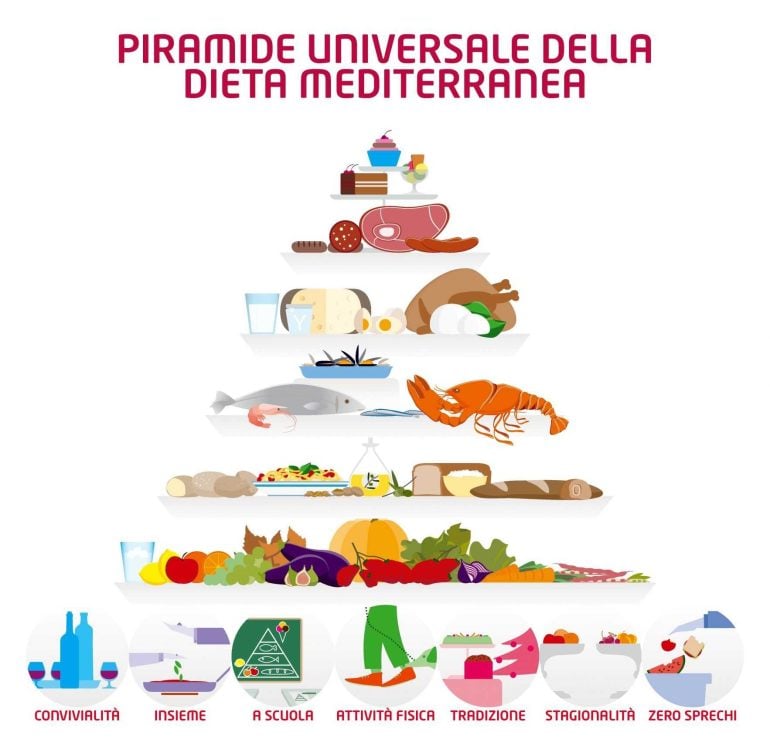
“When comparing the recommendations of the pyramid of the Mediterranean diet and the Nutri-Score, one actually notes the good convergence,” she added.
As a result, it should not come as a surprise if many traditional cold cuts, cheeses and other cured meats are classified by a D or even an E, Galan said, “because they contain significant amounts of saturated fats and salt and are also high in calories. But like all products classified D or E under Nutri-Score, cheeses and cured meat can perfectly be consumed as part of a balanced diet.”
“Informing consumers about the actuality of the nutritional quality of these traditional food products does not prevent consuming them but, of course, in limited quantities and frequencies, which is totally consistent with the principles of the Mediterranean diet model and with the meaning of their classification on the Nutri-Score scale,” she added.
According to Galan, Nutri-Score is also a useful tool because it can be applied retroactively to historical studies on health and nutrition. This helps give researchers a better idea of how the implementation of Nutri-Score may impact consumer choices and their consequences on health.
“Several cohort studies on a large sample of populations followed for many years in France, Spain and at a European level have shown that the consumption of foods with more favorable rating in the Nutri-Score scale is associated with a lower risk of developing chronic diseases, including cancers, cardiovascular diseases, weight gain and metabolic syndrome,” Galan said.
She cited the SUN cohort study in Spain as an example, which followed 20,000 participants over a period of 10 years.
“[The results showed that] the consumption of foods with less favorable classifications on the Nutri-Score scale was associated prospectively with a higher rate of all-cause mortality and cancer mortality, but also that the Nutri-Score calculation algorithm was perfectly consistent with the Mediterranean diet model.”
Galan added that other studies comparing consumer habits had demonstrated that shoppers with access to the information provided by Nutri-Score made healthier choices than those who did not. In the same study, Nutri-Score also outperformed other FOPLs.
“According to the studies, the overall nutritional quality of the shopping cart improved from 4.5 to 9.4 percent by the use of Nutri-Score, and the effect of Nutri-Score was particularly clear in disadvantaged populations,” she said.
As a result of these types of studies, Nutri-score’s adoption is recognized as a “best practice” in the fight against social inequalities in cancer prevention by the E.U.-sponsored Innovative Partnership for Action Against Cancer (iPAAC) competition.
Away from the data and modeling studies, Nutri-Score has also proven to be immensely popular in France, which was the first country to adopt the system voluntarily.
“Indeed, three years after its adoption, Nutri-Score appears as a well-known and supported logo that is increasingly impacting purchasing behaviors of French consumers,” Galan said.
According to the researcher, the latest data show that 94 percent of the French population approves the Nutri-Score presence on the packaging. In comparison, 89 percent believe that the label should be made mandatory.
Galan added that consumer support had a key role in driving the food companies to Nutri-Score.
See Also:Italian Researchers Say Nutri-Score Treats Shoppers Like Children“When first proposed by the scientists in France, absolutely no company supported Nutri-Score,” she said. “Only six companies were engaged in October 2017 when Nutri-Score was adopted in France. In May 2018, around 40 companies were involved.”
“Due to the pressure of consumers and scientific work supporting the interest of Nutri-Score as an important public health tool, more companies committed to Nutri-Score and today 520 companies with 690 brands have registered in France to display Nutri-Score,” Galan added.
She also noted that a growing number of food producers are reformulating some of their products to improve their nutritional profile and raise their Nutri-Score grades.
Some E.U. countries such as Austria, Portugal, and Poland are considering adopting Nutri-Score. Others, including Sweden or Denmark, introduced local food labels decades ago, and authorities do not seem eager to embrace the French FOPL.
Italy, which has voiced its opposition to Nutri-Score on multiple occasions, has also introduced its own FOPL – Nutrinform Battery.

Nutrinform Battery labeling system
“A common food label would be useful for European consumers, food companies, food trade and the market,” Galan said, in reference to an E.U.-wide FOPL. “Because of its strong scientific background, Nutri-Score has been at the core of the E.U. debate on the matter for several months.”
“However powerful lobbies relayed by some member states, especially Italy, use totally untruthful statements to discredit and block the choice of Nutri-Score at a European level,” she added.
According to Galan, Italy supports “a monochrome label missing any scientific substrate and whose principle and graphic representation are very close to the guideline daily amounts and reference intakes set up by food companies in the 2000s, and demonstrated by many studies to be totally ineffective.”
Regarding the Scandinavian Keyhole FOPL, Galan said that the three-decade-old binary label was no longer considered the most effective way to help consumers understand food quality and nutrition.
She added that E.U. should seek to adopt a “single and mandatory model of nutritional label” based on the latest scientific approach to health and nutrition.
[wpforms_poll form_id=“84537” field_id=“1” label=“true” counts=“false”]
“Nutri-Score relies on the large range of scientific validation studies that followed the methodology proposed by the World Health Organization Europe,” Galan said. “These studies demonstrated the relevance of the computation algorithm and the effectiveness of its graphic format.”
“No other labels present such a scientific background,” she added. “All the studies carried out with a rigorous methodology showed a superiority and better performance of Nutri-Score compared to other labels.”



